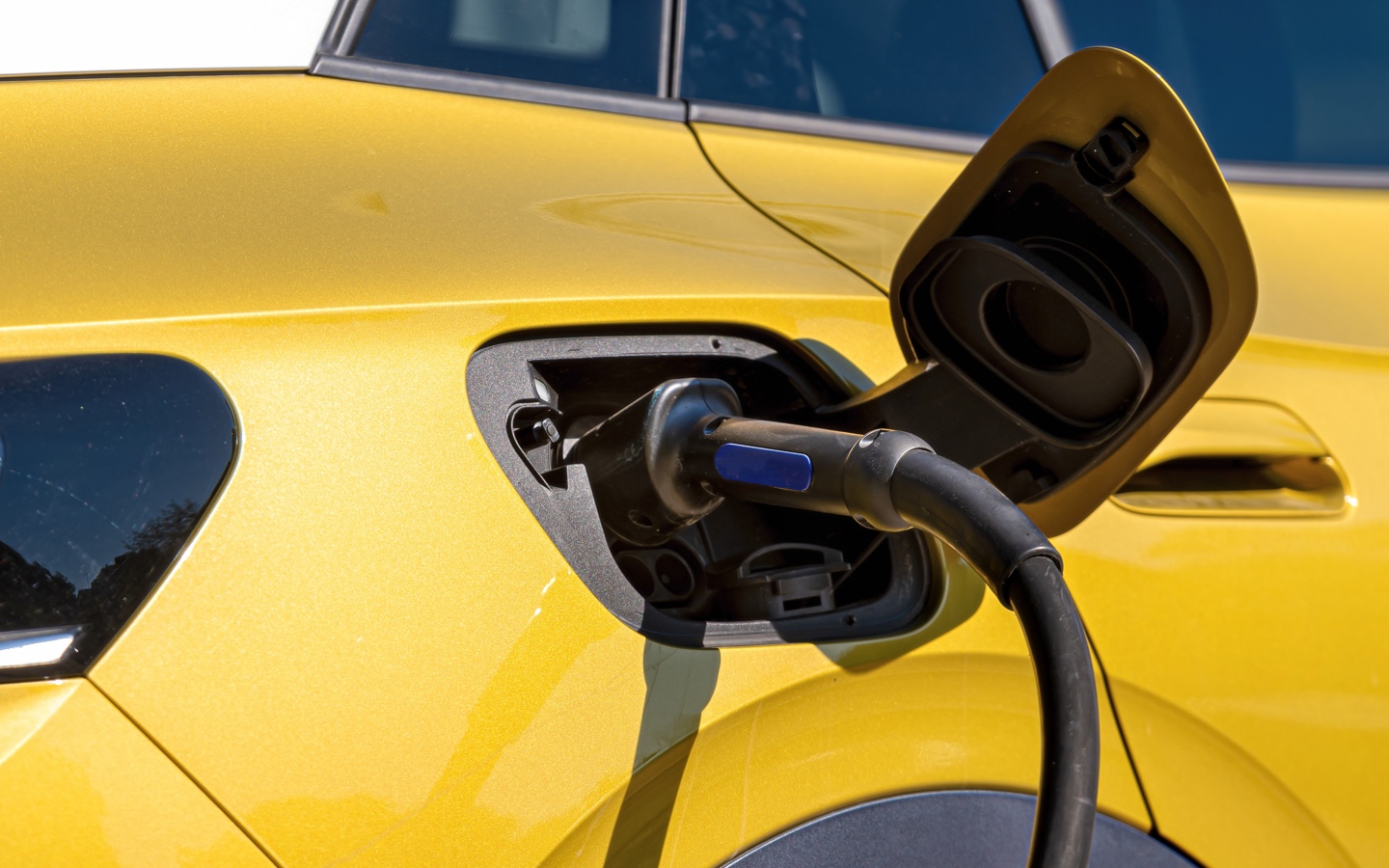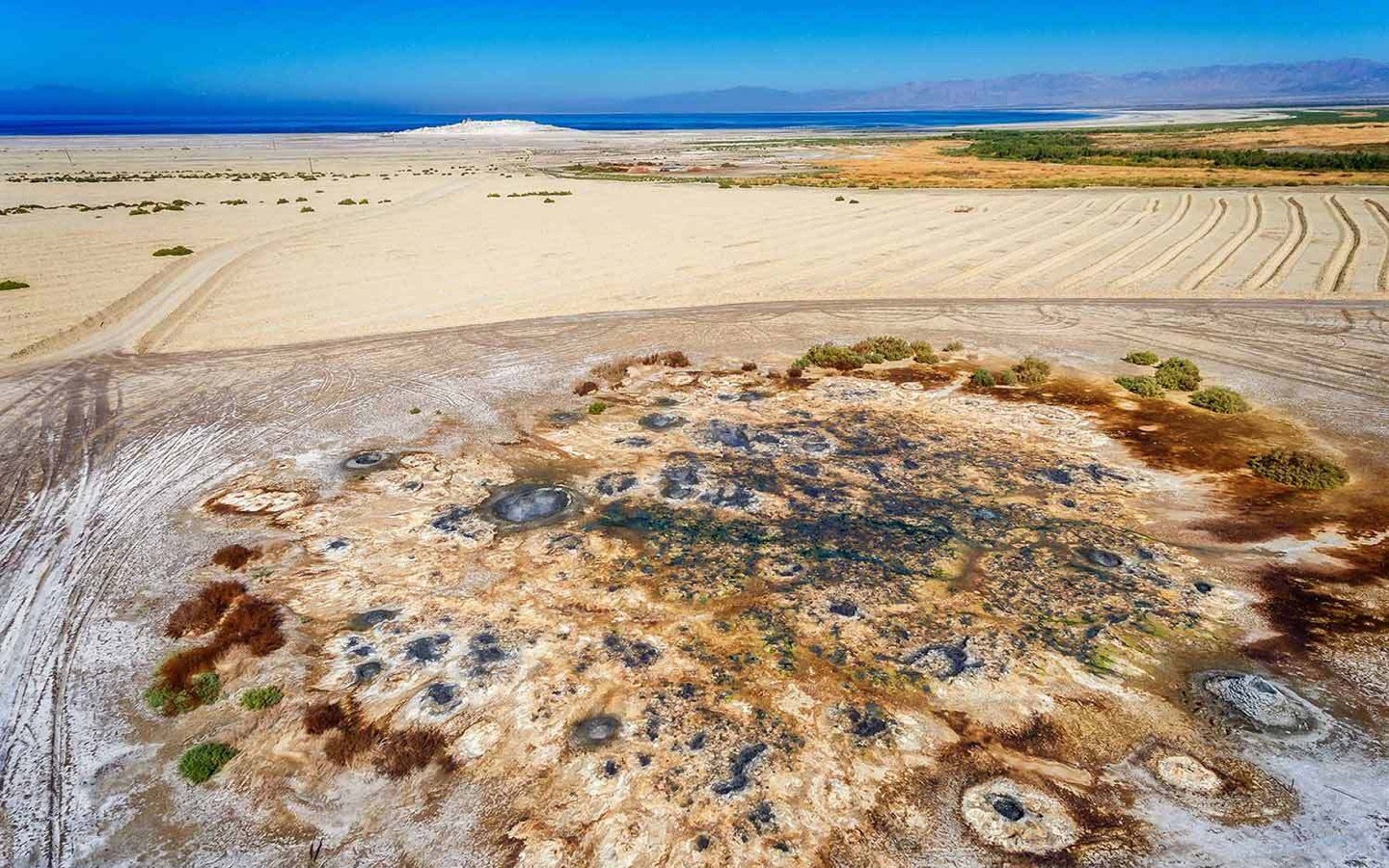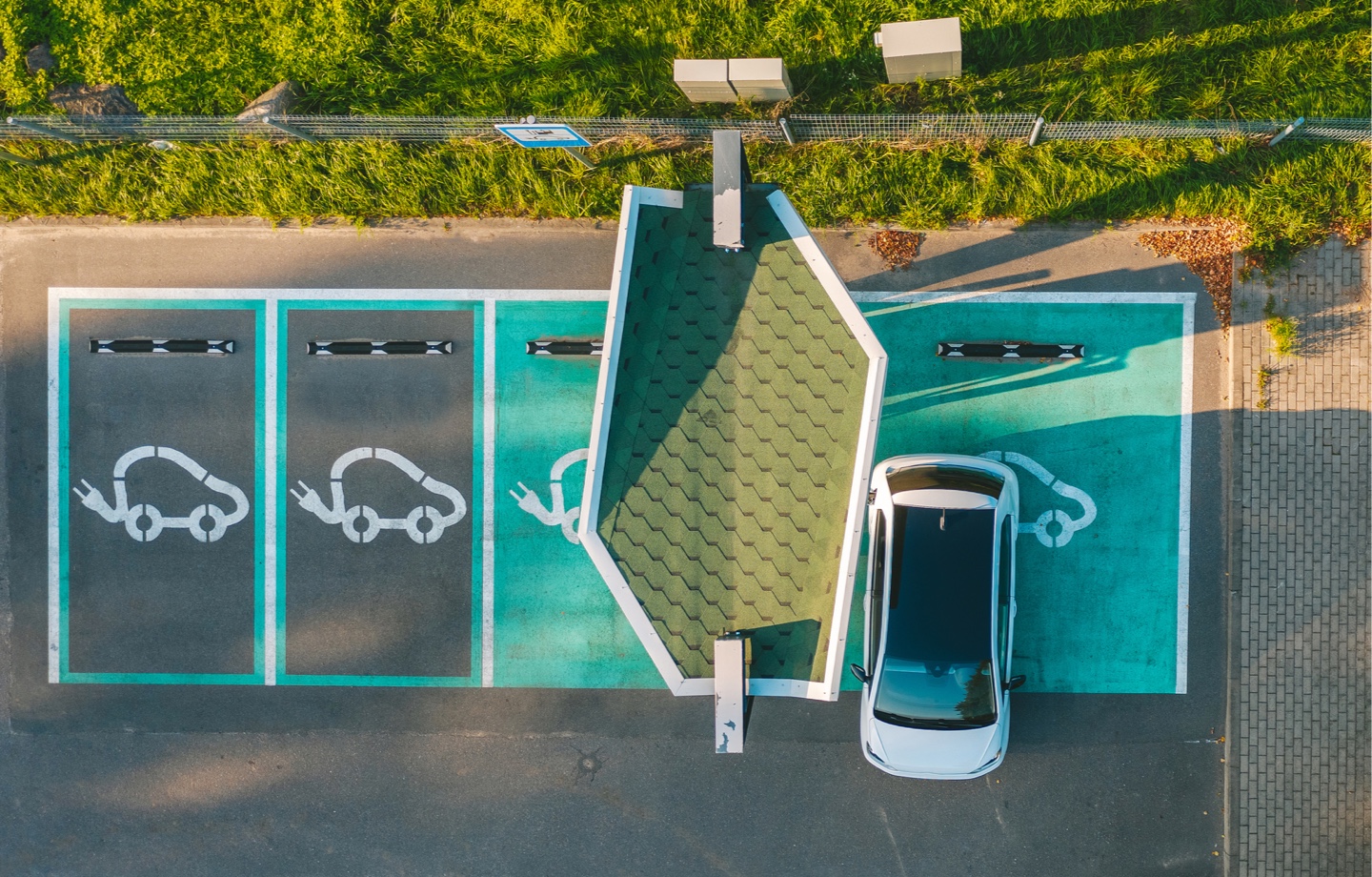Sustainability
Why We Need to Go Beyond Electric Vehicles
Electric vehicles will drastically reduce global carbon emissions. But lithium mining required for batteries has major social and environmental costs. Innovations are making extraction of the precious metal more sustainable.
Peehee mm’huh, or Thacker Pass, in Humboldt, Nevada, is a vast, largely untouched expanse of wilderness. And if you’ve ever had the chance to sleep under the stars here, like environmental activist Max Wilbert has countless times, you know it’s also a sight to behold. The valley and wildlife migration route is known for rolling, mountainous landscapes to the north and south, roaming Pronghorn Antelope and Mule Deer, grassy fields intermingled with some of the world’s last remaining old-growth sagebrush, soaring golden eagles, and a snail species that’s endemic to the area.
In a society that values consumerism, Thacker Pass is a reminder of our innate connection to the land. If a proposed lithium mine project, spearheaded by Lithium Americas, the parent company of Lithium Nevada, moves forward, the Thacker Pass that people know today will become little more than a memory. But climate change is already destroying our planet’s essential ecosystems and biodiversity, and we only have a small window of time to drastically reduce our carbon emissions and reliance on fossil fuels before those effects are irreversible. Electric vehicles (which require lithium-ion batteries to operate) are one of the most effective tools we have to reduce greenhouse gas emissions, fast.
The largest lithium mine in the U.S., and the second-largest in the world, the Thacker Pass project is expected to generate up to 80,000 tons of lithium carbonate per year over its 46-year lifespan and billions in revenue. If demand for battery-powered vehicles increases at the rate that’s anticipated, we’ll need new lithium resources to keep up. Sales of passenger electric vehicles are projected to surge from 3 million in 2020 to 66 million in 2040. As a result, demand for lithium is estimated to quadruple, from 345,000 tonnes per year in 2020 to 2 million tonnes in 2030.
Despite the economic impacts and the implications for fighting climate change, the proposed Thacker Pass project is not without opposition. Activists like Wilbert, the People of Red Mountain — an organization made up of members of the Paiute Tribe that lives approximately 20 miles from the proposed mine — and local ranchers are concerned about the environmental devastation that will result from more than 40 years of mining at Thacker Pass. Their concerns are based on the grim long-term impacts of lithium mining.

Read more: The True Cost of Air Pollution
“When they did the analysis for this project, they looked at how toxins would move through the land and the water. What they found is that there will be toxicity and water pollution for 300 years. And that’s just where they stopped their analysis,” says Wilbert. “That’s not time that the sage growth has, that’s not time the Cutthroat trout have.”
But if the Thacker Pass project moves forward, it would solidify the U.S. as a major player in the lithium industry. Currently, more than half of the world’s lithium resources are located beneath the salt flats in the Andean regions of Argentina, Bolivia, and Chile — also known as the lithium triangle — according to a report by the United Nations Conference on Trade and Development. In these areas, which represent one of the driest desert regions in the world, the negative social and environmental impacts of lithium mining are far-reaching.
In Chile’s Salar de Atacama, open pit mining for lithium and other minerals has resulted in the degradation of 65 percent of the region’s water supply, threatening the way of life for local quinoa farmers and llama herders who rely on water to tend their crops and herds. (Lithium extraction requires a massive amount of groundwater — it takes approximately 500,000 gallons of water for every one tonne of lithium.) And for centuries, Indigenous communities in the lithium triangle have struggled with miners for access to communal land and water resources. The destruction of ecosystems and water supply from lithium mining in these regions has also resulted in forced migration from villages and ancestral areas.
In addition, the mining operation requires toxic chemicals — like hydrochloric and sulfuric acid — to extract and process the lithium. As a result, the surrounding communities are at risk of exposure to these harmful chemicals due to leaching and spills, inevitably contaminating the soil, water, and air. According to UNCTAD, breathing in lithium dust and alkaline lithium compounds irritates the respiratory tract and prolonged exposure to lithium can cause fluid build-up in the lungs, leading to pulmonary edema. In Argentina’s Salar de Hombre Muerto, local communities claim lithium operations have contaminated streams used for humans, livestock, and crop irrigation.
Lithium mines are also shown to emit large amounts of greenhouse gases. In 2016, the largest mining companies, as measured by CO2 emissions, were responsible for 211.3 million metric tonnes of carbon emissions.
But the transition to electric vehicles is critical to reducing our dependence on fossil fuels and greenhouse gas emissions that cause climate change. Scientists warn if we don’t drastically reduce carbon emissions, the planet will warm well past the tipping point of 1.5 degrees Celsius, resulting in frost-free growing seasons that affect ecosystems and agriculture, more intense flooding in the northern United States, extreme heatwaves and droughts in the Southwestern U.S., stronger hurricanes, sea-level rise by up to eight feet, and an ice-less arctic region.

Read more: Why You Should Switch to a Heat Pump
But, even without decarbonization of the electric grid, electric vehicles are projected to reduce carbon emissions by 72 metric tons of CO2, with that number doubling if the electric grid is decarbonized, according to a report by the International Energy Agency. Another study published by Nature Sustainability found that by 2030, even inefficient electric vehicles will have lower emission intensities than very efficient new fossil fuel-based alternatives in regions accounting for around 90 percent of the global transportation demands.
“Road transport represents more than 10 percent of our global emissions, and transport in general, including aviation, shipping, and rail, represents more than 15 percent. Decarbonizing the transport sector, especially road transport, is an essential part of our global strategy to reach net-zero emissions by 2050,” says Dr. Pablo Salas, the Prince of Wales Global Sustainability Fellow in Radical Innovation and Disruption at the University of Cambridge and co-author of Nature Sustainability study. “But a delay in the decarbonization of the power sector shouldn’t be an excuse not to adopt electric vehicles, as they are still the best option to reduce emissions.”
Controlled Thermal Resources knows lithium mining practices aren’t sustainable. In Imperial Valley, California, on the southern shores of the Salton Sea, CTR is the developer for a proposed lithium project known as Hell’s Kitchen. Underneath the dusty desert sits a massive, untapped geothermal and lithium resource, and it’s here that CTR plans to use technological advances in clean energy to eliminate the environmental impacts of lithium mining.
“We are incredibly fortunate to have strong support from the community. I think we have over 25 letters of support from local community groups and organizations that can see the good jobs and economic benefits,” says Rod Colwell, Director and CEO of Controlled Thermal Resources. “Thanks to Assemblymember Eduardo Garcia, who represents California’s 56th Assembly District, we also have the Lithium Valley Commission where community leaders and representatives, developers, and other key stakeholders all have a seat at the table. I think we are all very committed to getting this right for everyone from the beginning.”
Unlike open pit mining and evaporation pools that require toxins and, until now, were the primary means to extracting lithium, CTR’s system makes use of geothermal energy, a renewable, emissions-free energy source. Geothermal energy relies on heat generated by the Earth’s core to warm water under the area’s rock formations. This water, also known as brine, contains valuable lithium and other minerals. When companies like CTR drill into the rock formations, it brings the heated water to the surface, where the pressure drop causes it to transform into a gas that creates steam, powering turbines and providing clean electricity for the power plant to process the lithium. Once the lithium is extracted, the brine is reinjected into the ground. There’s no contamination of water, soil, or air — water vapor is the main byproduct — and the closed-loop process has a close-to-zero carbon footprint.
“Recovering lithium from geothermal brines is the most sustainable and environmentally friendly way to produce battery-grade lithium products for electric vehicles and battery energy storage systems,” says Colwell. “This process is fully integrated, which means everything happens onsite and nothing needs to be processed overseas — that’s another very big plus — as well as the incredibly small physical footprint and a near-zero carbon footprint. It’s vital that the raw materials that go into electric vehicles are produced with the same intent to minimize carbon emissions and environmental impacts.”
Hell’s Kitchen isn’t a done deal, though. CTR still needs to secure financing to build its power plant, obtain water use permits, conduct an environmental analysis, and find a buyer for the lithium it hopes to extract. (CTR’s facility will be able to produce 20,000 tonnes of lithium hydroxide by 2024, with the capacity to produce 80,000 tonnes once they reach Stage 2 of the project.) But the fact that CTR is testing out a sustainable way to extract this vital resource is encouraging and paints a brighter future for our planet in the decades to come.
“We certainly think Hell’s Kitchen will set a new benchmark for the lithium industry. While we have a unique resource that can only be replicated in a handful of places in the world, we hope that DLE technologies (Direct Lithium Extraction) will be adopted where possible to replace large evaporation ponds.”
Though they’re essential to limiting carbon emissions, electric vehicles still have a far greater environmental impact than say, walking, riding a bike, or taking an electricity-powered bus or train. Unfortunately, the U.S. lags in infrastructure to support alternative modes of transportation compared to the rest of the world. Studies show that Asian public transit systems carry more than 26 billion passengers per year, European systems transport more than 10 billion passengers, Latin America nearly 6 billion, and North America (the U.S. and Canada) a minuscule 3.7 billion. In Arlington, Texas, a city of 400,000 residents, there is no public transport available.
Most American cities also weren’t designed with public transportation in mind, so we rely more heavily on cars than other countries. From 2005 to 2018, the total number of vehicles in the U.S. jumped 12.6 percent, from 196.6 million to 221.4 million. And in 2019, 55 of the U.S.’ 100 largest metro areas had more vehicles per household than the national average of 1.82, according to the Brookings Institute. Meanwhile, in countries like Denmark, 90 percent of the population owns a bike while only 56 percent owns a car. The same goes for Amsterdam, a city with a population of 779,808, where there are 800,000 bikes and only 263,000 cars. If we’re serious about stopping climate change, the U.S. needs to rethink its car-centric culture and invest in other transportation systems that emit little or no greenhouse gas emissions.
“The ecological problems we face are much deeper,” says Wilbert. “They relate to the very structure of our society, the structure of our economy, the way we live in a much deeper way than whether or not our cars are electric.”

Read more: The Creative Agencies Boycotting the Fossil Fuel Industry
Have feedback on our story? Email us at [email protected] to let us know what you think!

Shop Pillows
The Essential Organic Pillow Collection
Gentle, breathable, non-toxic support.





